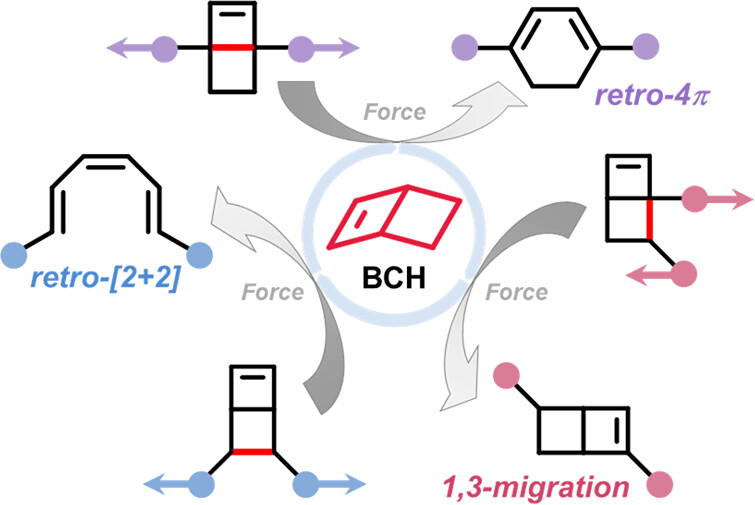Polymer mechanochemistry has been established as an enabling tool in accessing chemical reactivity and reaction pathways that are distinctive from their thermal counterparts. However, eliciting diversified reaction pathways by activating different constituent chemical bonds from the same mechanophore structure remains challenging. Here, we report the design of a bicyclo[2.2.0]hexene (BCH) mechanophore to leverage its structural simplicity and relatively low molecular symmetry to demonstrate this idea of multimodal activation. Upon changing the attachment points of pendant polymer chains, three different C–C bonds in bicyclo[2.2.0]hexene are specifically activated via externally applied force by sonication. Experimental characterization confirms that in different scenarios of polymer attachment, the regioisomers of BCH undergo different activation reactions, entailing retro-[2+2] cycloreversion, 1,3-allylic migration, and retro-4π ring-opening reactions, respectively. Control experiments with small-molecule analogues reveal that the observed diversified reactivity of BCH regioisomers is possible only with mechanical force. Theoretical studies further elucidate that the differences in the positions of substitution between regioisomers have a minimal impact on the potential energy surface of the parent BCH scaffold. The mechanochemical selectivity between different C–C bonds in each constitutional isomer is a result of selective and effective coupling of force to the aligned C–C bond in each case.
Read more in:
Leveraging mechanochemistry for sustainable polymer degradation
Shihao Ding, Wenkai Wang, Anne Germann, Yiting Wei, Tianyi Du, Jan Meisner, Rong Zhu, Yun Liu
J. Am. Chem. Soc., 146, 9, 6104-6113, 2024



